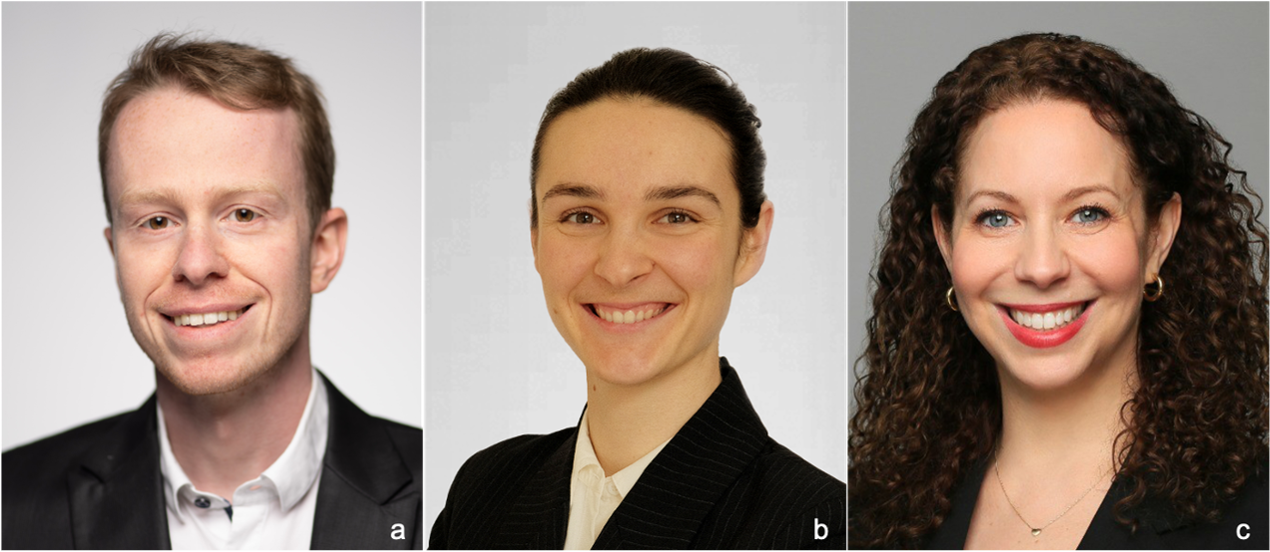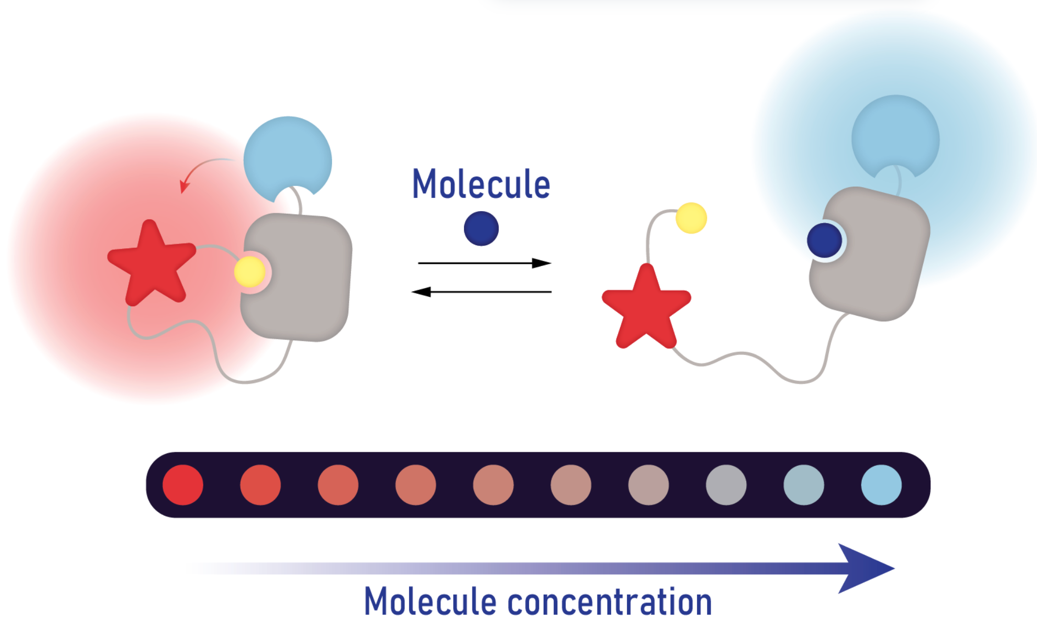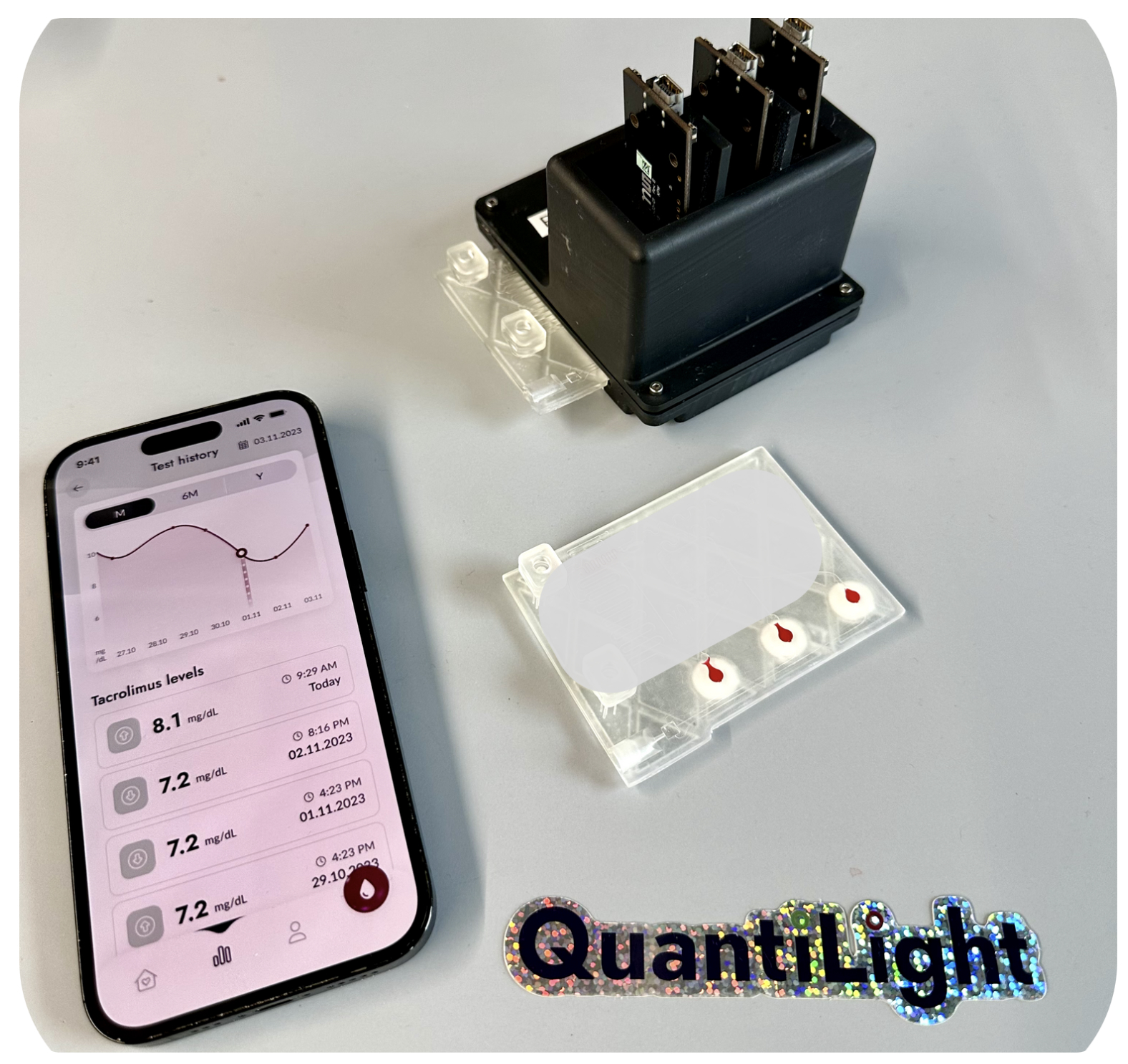Fluorescence and smartphones instead of laboratories
Mobile blood-analysis system for at home medication monitoring
For many medications, regular monitoring of drug concentrations in the blood is necessary to ensure efficacy and safety. Until now, this process has been time-consuming and required laboratory personnel and resources. The Heidelberg based start up QuantiLight has developed a mobile device with innovative sensor technology that enables quick, easy measurements at home or in a doctor's surgery.
Numerous medications have a narrow therapeutic range, meaning they achieve optimal effect only within a specific concentration window. If the concentrations of the drugs in the blood exceed this range, serious side effects may occur; if they are too low, the desired effect will not be achieved. This is especially critical for immunosuppressants, antiepileptic drugs, psychotropic medications, anticancer agents and anticoagulants. Individual patient factors - such as body weight, gender, comorbidities, genetic predispositions and lifestyle - can influence drug levels. Regular blood tests are therefore necessary to ensure correct dosing.
 Dr. Corentin Gondrand (a), Dr. Estelle Bonedeau (b) and Erin Federman (c) from QuantiLight offer a portable platform for measuring drug concentrations in blood. © QuantiLight GmbH
Dr. Corentin Gondrand (a), Dr. Estelle Bonedeau (b) and Erin Federman (c) from QuantiLight offer a portable platform for measuring drug concentrations in blood. © QuantiLight GmbHTherapeutic drug monitoring (TDM) is time‑consuming and labour‑intensive because blood samples must be analysed in a laboratory. "Currently, patients either have to go to a doctor's surgery to have their blood taken or collect a sample of dried blood themselves and send it to the clinic. It then takes several days for the results to come back," explains Dr. Corentin Gondrand, managing director and co‑founder of the Heidelberg‑based start‑up QuantiLight. "We have developed a method that enables reliable measurement at the point of care within 15 minutes — at home, in the doctor's surgery, or at the bedside."
Bioluminescent sensors detect drugs
 The novel sensors consist of the enzyme luciferase (light blue), a receptor molecule (grey), a fluorophore (red) and a ligand (yellow). In the absence of the active substance, the ligand binds the receptor and stabilises the sensor in a compact conformation, allowing bioluminescence resonance energy transfer (BRET) to occur; the fluorophore then emits red light. When the active substance (dark blue) displaces the ligand, the sensor’s conformation changes and BRET is interrupted, leaving only the blue bioluminescence from luciferase. © QuantiLight GmbH
The novel sensors consist of the enzyme luciferase (light blue), a receptor molecule (grey), a fluorophore (red) and a ligand (yellow). In the absence of the active substance, the ligand binds the receptor and stabilises the sensor in a compact conformation, allowing bioluminescence resonance energy transfer (BRET) to occur; the fluorophore then emits red light. When the active substance (dark blue) displaces the ligand, the sensor’s conformation changes and BRET is interrupted, leaving only the blue bioluminescence from luciferase. © QuantiLight GmbHThe technology used by QuantiLight is based on research from the Department of Chemical Biology at the Max Planck Institute for Medical Research in Heidelberg. A team led by Prof. Dr. Kai Johnsson has developed sensors that can precisely measure minute amounts of drugs using bioluminescence. The method employs the enzyme luciferase, which produces blue light by converting a substrate in the presence of oxygen. When this light excites a nearby fluorophore — a compound capable of fluorescence — the fluorophore emits light at a different wavelength (in this case, red). Bioluminescence resonance energy transfer (BRET) is possible only between molecules in close proximity, so the researchers designed sensor molecules that combine a drug receptor, a luciferase protein and a fluorophore. Drug binding alters the sensor’s conformation and therefore BRET’s efficiency; the resulting changes in colour intensity can be measured to infer the drug concentration in the sample.1)2)
"We have since developed a large number of different biosensors, all based on the same core principle," says Gondrand, who has worked as a postdoc with Johnsson since 2017. "We can detect various immunosuppressants, anticoagulants and cancer drugs, as well as endogenous biomarkers such as metabolites that provide information about organ function. Our method is extremely sensitive and at least as accurate as current laboratory tests."
From research to everyday life
After many years of basic research, the chemical biologist and his colleague, molecular biologist Dr. Estelle Bonedeau, decided to make the innovative technology available to patients. In 2023, they won the ideas competition at the inaugural Heidelberg IMPACT DAY with their QuantiLight project and subsequently received funding from the German Federal Ministry for Economic Affairs and Energy’s EXIST research transfer programme to develop a prototype.
 The analysis platform comprises a small cartridge (front right) containing the sensor, a reader and a mobile app that can retrieve the measurement results. © QuantiLight GmbH
The analysis platform comprises a small cartridge (front right) containing the sensor, a reader and a mobile app that can retrieve the measurement results. © QuantiLight GmbHGondrand explains: "Our portable platform is very easy to use. It consists of a disposable cartridge the size of a business card that contains the sensor and a reader that detects the light emitted and calculates the concentration of the substance being tested. The analysis only requires a drop of blood on the cartridge, and the result is sent within minutes to a mobile app via Bluetooth."
As part of a small clinical trial, the analysis system was tested on several phenylketonuria patients in collaboration with a local university hospital.3) This serious congenital metabolic disorder results in an inability to break down the amino acid phenylalanine. If the disease is detected too late, phenylalanine accumulates in the body and can lead to intellectual disability and seizures. Because phenylalanine is present in almost all natural proteins, affected individuals must follow a strict low-protein diet and have their blood levels checked regularly.
"After just two uses, 90 percent of test subjects felt confident using the device," says Gondrand. "Although our solution takes a little longer than simply placing a drop of blood on a piece of paper, 95 percent of test subjects preferred our method because the results are available more quickly."
A win for the entire healthcare system
Since May 2025, Gondrand and Bonedeau have been joined by economic expert Erin Federman as CCO. The start-up, founded in early June, is working to further develop the measuring device; the improved version will then be tested in a larger clinical study to obtain CE marking. The founders are still seeking partners and investors for this step. While QuantiLight plans to continue manufacturing the sensor proteins in-house, the cartridges and readers will be produced in cooperation with an industrial partner.
"We are initially focusing on monitoring immunosuppressants. There is huge need for this, as more than 1 million people in Europe and the United States rely on these drugs after organ transplants," explains Gondrand. "However, our system has a wide range of applications, particularly because we can quantify up to three different substances from a single blood sample."
QuantiLight’s innovative technology not only delivers fast results but also reduces the workload for laboratory and medical staff, leading to lower overall costs for hospitals and health insurers. The mobile platform therefore offers a smart, flexible solution for the drug monitoring of tomorrow.